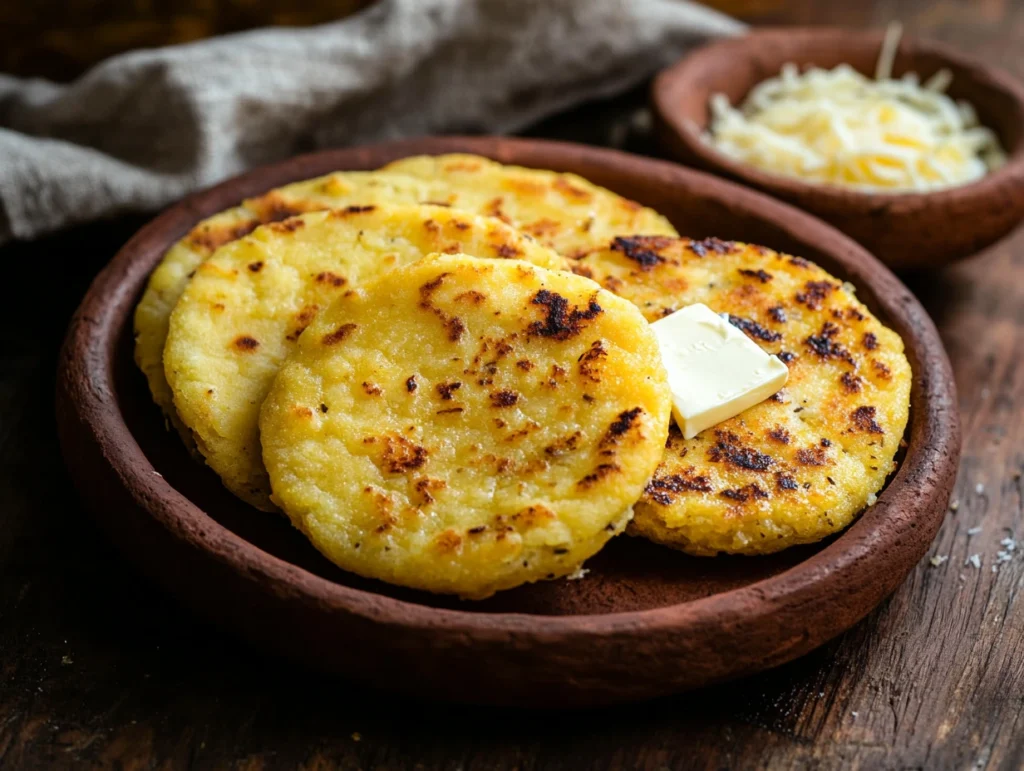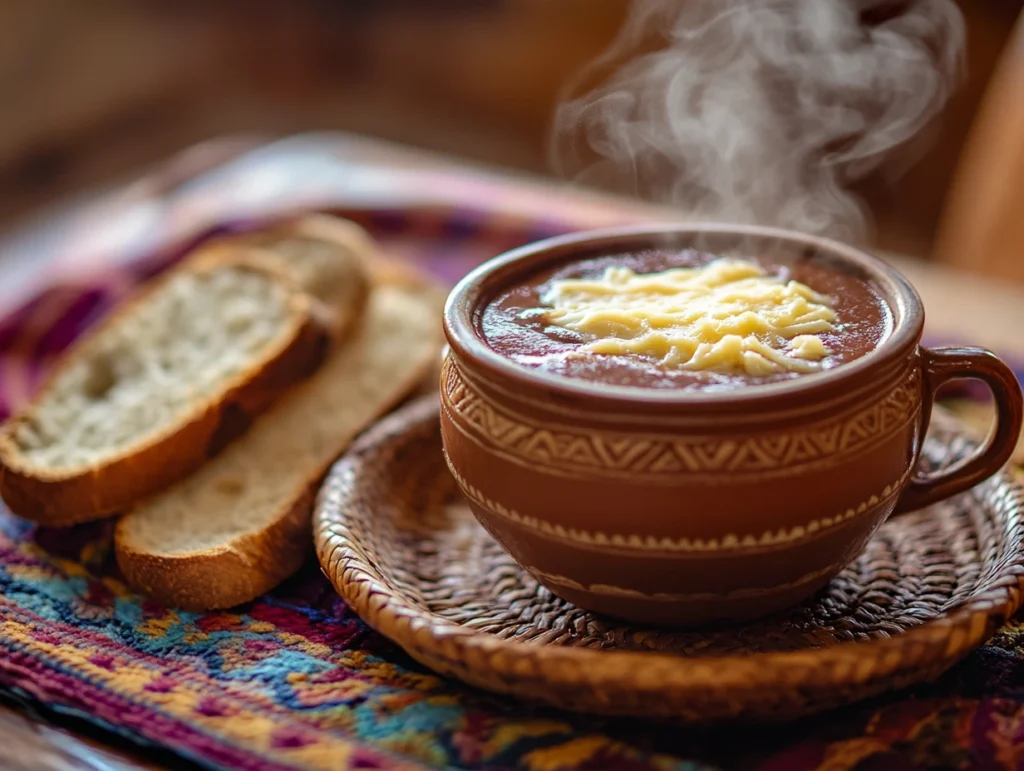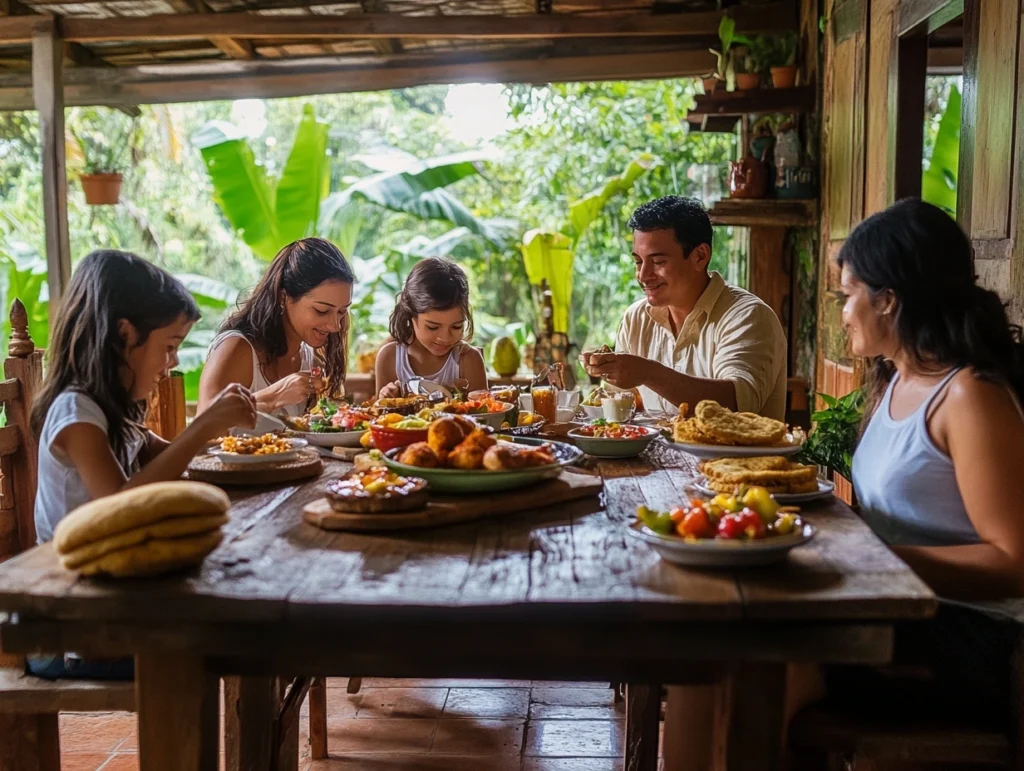Colombia, a country rich in cultural diversity, takes its breakfasts as seriously as its stunning landscapes. From the bustling city streets of Bogotá to the serene coasts of Cartagena, breakfast isn’t just a meal—it’s a ritual. In this article, we’ll explore the hearty, flavorful, and sometimes surprising dishes that make up a typical Colombian breakfast. You’ll discover regional variations, iconic staples like arepas and calentado, and even a few beverages that might catch you off guard. Ready to dive in? Let’s start with a closer look at the essence of Colombian breakfast culture.
An Introduction to Colombian Breakfast Culture
Why Breakfast is Important in Colombian Culture
In Colombia, breakfast isn’t just the day’s first meal—it’s a vibrant celebration of flavors, culture, and tradition. Known locally as “desayuno,” breakfast is often a hearty affair designed to fuel the day ahead. Unlike a quick grab-and-go option common in other parts of the world, breakfast in Colombia is a moment of connection, whether enjoyed in the comfort of home, at a bustling café, or from a friendly street vendor. It’s a meal that reflects the country’s rich culinary heritage and deep-rooted emphasis on family and community.
What makes Colombian breakfasts truly special is their unique blend of indigenous, Spanish, and African influences. Each dish tells a story, marrying age-old cooking techniques with locally sourced ingredients. The result is a meal that is fresh, unpretentious, and deeply satisfying—a testament to the diversity of Colombia’s culinary identity.
The Influence of Regional Flavors and Ingredients
Colombia’s varied geography profoundly shapes its breakfast offerings. In the cool, mountainous regions of the Andes, comforting dishes like changua (milk and egg soup) and caldo de costilla (beef rib soup) provide warmth and nourishment. Meanwhile, along the tropical coasts, seafood and plantain-based dishes like arepa de huevo reflect the region’s bold, sunny flavors. In the Amazon, exotic fruits and yucca play a starring role, highlighting the area’s lush biodiversity.
Staple ingredients such as corn, plantains, beans, and fresh cheese serve as the foundation for many Colombian breakfasts. These versatile ingredients are transformed into iconic dishes like arepas, empanadas, and calentado, offering a range of flavors and textures that vary from region to region. This diversity ensures that Colombian breakfasts are not only delicious but also a delightful reflection of the country’s cultural and geographical richness.
Traditional Dishes Found in a Colombian Breakfast

Arepas: The Staple of Colombian Breakfast
When thinking about what is a typical Colombian breakfast, one word that immediately comes to mind is arepas. This versatile cornmeal flatbread is beloved across Colombia and often served with cheese, butter, or eggs. Arepas can range from simple and plain to stuffed with rich fillings like meat or beans, catering to all tastes.
Colombians typically enjoy arepas fresh off the griddle, accompanied by a steaming cup of Café Colombiano. Their portability also makes them a favorite choice for busy mornings, whether eaten at home or on the go.
Calentado: A Hearty Start to the Day
Calentado, which translates to “reheated,” is a breakfast that speaks to resourcefulness and flavor. It consists of rice and beans from the previous day, often mixed with meat, plantains, or an egg on top. This dish reflects Colombian culture’s emphasis on reducing waste while creating something delicious.
Its hearty nature makes calentado a popular choice for those needing energy for a labor-intensive day. It’s a common sight at local eateries and a highlight of any traditional Colombian breakfast menu.
Empanadas: A Quick and Flavorful Option
Empanadas are a crowd-pleaser in Colombian breakfast culture. These golden pastries are typically filled with savory ingredients such as beef, chicken, potatoes, or cheese. With their crispy exterior and warm, flavorful interior, they’re an excellent grab-and-go option.
Often paired with spicy aji sauce, empanadas offer a burst of flavor in every bite. These hand-held delights are especially popular with street vendors, ensuring they’re accessible to locals and visitors alike.
Colombian Breakfast Drinks
Café Colombiano: More than Just Coffee
Coffee lovers might already be familiar with the fame of Colombian coffee, but Café Colombiano plays a unique role in the country’s breakfast culture. Served black or lightly sweetened, this beverage is an essential morning ritual for many Colombians. Its rich, smooth flavor reflects Colombia’s status as one of the world’s top coffee producers.
Pairing a cup of coffee with arepas or empanadas makes for a quintessential Colombian morning experience.
Hot Chocolate with Cheese: A Unique Combination

Yes, you read that right—hot chocolate with cheese is a breakfast staple in Colombia. Known as chocolate santafereño, this dish involves dipping chunks of cheese into a cup of hot chocolate until they melt. The result is a sweet and savory treat that surprises and delights the uninitiated.
This pairing might sound unusual, but it holds a special place in the hearts of Colombians, especially during chilly mornings in the Andean regions.
Other Popular Beverages: Aguapanela and Fresh Juices
When discussing what is a typical Colombian breakfast, one cannot overlook aguapanela—a traditional drink made by dissolving unrefined sugarcane in water. Served hot or cold, it’s a comforting and energy-boosting beverage. Many Colombians add lime for extra flavor.
Fresh juices, made from tropical fruits like guava, passionfruit, or mango, are another breakfast staple. Their vibrant flavors bring a taste of Colombia’s natural bounty to every meal.
For readers interested in exploring more breakfast inspirations, check out this guide to Colombian Breakfast Recipes on Elon Recipes.
Regional Variations of Colombian Breakfast
Coastal Breakfasts: Seafood and Fried Plantains
Colombia’s coastline offers a distinct twist to breakfast traditions. In coastal regions like Cartagena and Barranquilla, you’ll often find seafood and tropical ingredients playing starring roles. Dishes like cayeye—mashed green plantains served with cheese or butter—are popular staples.
Another standout is the arepa de huevo, a fried arepa stuffed with egg. This dish exemplifies the coast’s bold and hearty flavors. Paired with fresh coconut juice or aguapanela, these breakfasts are a delightful way to start the day with a taste of the Caribbean.
Andean Breakfasts: Warm Soups and Dairy
In the chilly highlands of the Andes, breakfast takes on a comforting and hearty tone. One of the most iconic dishes is changua, a milk-based soup made with eggs, scallions, and cilantro. This dish is typically served with toast and cheese, offering a warming start to the day.
Another popular choice is caldo de costilla, a flavorful beef rib soup that is often enjoyed after late-night festivities. The Andean breakfast reflects the region’s focus on nourishment and warmth.
Amazonian Influences on Morning Meals
In Colombia’s Amazon region, breakfast incorporates fresh and exotic ingredients. Fruits like açaí and yucca-based dishes often feature prominently. These meals highlight the biodiversity of the Amazon, offering unique textures and flavors that set them apart from other regions.
While less commonly found outside the region, Amazonian breakfasts showcase the richness of Colombia’s culinary heritage.
For more ideas on creating diverse breakfast recipes inspired by global flavors, visit our article on Colombian Breakfast Recipes.
How to Prepare a Typical Colombian Breakfast at Home
Essential Ingredients for Colombian Recipes
To recreate what is a typical Colombian breakfast at home, start by gathering the essential ingredients. Staples like cornmeal for arepas, beans, rice, plantains, fresh cheese, and eggs are must-haves. For beverages, stock up on Colombian coffee or panela for aguapanela.
Additionally, tropical fruits such as mango, papaya, and guava can add a refreshing touch to your morning spread.
Step-by-Step Guide to Making Arepas and Calentado
- Arepas: Combine cornmeal, water, salt, and butter to form a dough. Shape into patties and cook on a hot griddle until golden. Enjoy with cheese or butter for an authentic taste.
- Calentado: Reheat rice and beans in a pan, add sautéed onions, and top with a fried egg. Serve with sliced avocado or fried plantains for a hearty meal.
These recipes are simple yet flavorful, bringing the essence of a Colombian breakfast to your table.
For more delicious breakfast inspirations, check out our Colombian Breakfast Recipes to explore variations of these traditional dishes.
The Social Aspect of Breakfast in Colombia
Family and Community Connections Over Breakfast

In Colombia, breakfast isn’t just about satisfying hunger—it’s a time for connection. Families often gather around the table to enjoy meals together, sharing stories and strengthening bonds before heading off for the day. This communal approach to breakfast reflects Colombia’s emphasis on family and tradition.
In rural areas, neighbors might come together to share what is a typical Colombian breakfast, creating a sense of community. Whether at home or in a local café, breakfast is an opportunity to celebrate relationships over delicious food.
The Role of Street Vendors in Breakfast Culture
Street vendors are a vibrant part of Colombian breakfast culture, offering quick and flavorful options for busy mornings. From hot arepas fresh off the grill to savory empanadas and warm drinks, these vendors provide affordable and authentic meals on the go.
For many Colombians, grabbing breakfast from a vendor is both a practical and cultural experience. It’s a way to stay connected to traditional flavors while embracing the convenience of city life.
Frequently Asked Questions About Colombian Breakfast
What is the Most Popular Colombian Breakfast Dish?
When asking what is a typical Colombian breakfast, arepas undoubtedly come to mind. This versatile dish is beloved throughout the country and pairs well with a variety of toppings and sides. Its simplicity and widespread availability make it a staple in Colombian households.
Is Colombian Breakfast Healthy?
Colombian breakfasts often strike a balance between indulgence and nutrition. Dishes like calentado provide protein and energy, while fresh tropical fruits and juices add vitamins and flavor. However, fried items like arepa de huevo and empanadas should be enjoyed in moderation.
How Do Regional Ingredients Influence Breakfast Choices?
Regional diversity plays a big role in defining what is a typical Colombian breakfast. Coastal regions favor seafood and plantains, while the Andes rely on hearty soups and dairy products. These local ingredients reflect Colombia’s rich biodiversity and culinary traditions.
Common Mistakes to Avoid When Exploring Colombian Breakfasts
Overlooking Regional Specialties
One common mistake when trying to understand what is a typical Colombian breakfast is focusing solely on one region’s cuisine. Colombia is a country of rich diversity, and each area offers unique breakfast dishes. For example, skipping over coastal favorites like arepa de huevo or neglecting Andean classics like changua could mean missing out on key parts of the experience.
When exploring Colombian breakfasts, take the time to sample dishes from various regions. This approach ensures a fuller appreciation of the country’s culinary heritage.
Assuming All Arepas Are the Same
While arepas are a cornerstone of Colombian breakfasts, assuming they are all alike is a common oversight. In reality, arepas come in numerous varieties—sweet, savory, stuffed, or plain—each reflecting local traditions and preferences.
For instance, arepa de choclo (sweet corn arepa) is vastly different from the cheese-filled arepa de queso. Exploring these variations allows you to better understand the versatility of this beloved dish.
Ignoring the Importance of Accompaniments
Another mistake is underestimating the role of drinks and sides in defining what is a typical Colombian breakfast. Beverages like aguapanela, Café Colombiano, and chocolate santafereño are integral to the meal. Similarly, sides such as fresh tropical fruits or fried plantains add balance and flavor to the overall experience.
Skipping these accompaniments can result in a less authentic and less satisfying breakfast.
Conclusion
Colombian breakfasts are more than just meals—they are a celebration of culture, tradition, and regional diversity. Whether you’re savoring a simple arepa in the Andes or diving into a hearty calentado on the coast, every dish tells a story of Colombia’s rich culinary heritage.
When asked, “What is a typical Colombian breakfast?”, the answer is beautifully complex. It’s a harmonious blend of indigenous, Spanish, and African influences, shaped by local ingredients and traditions. From street vendor delights to family breakfasts at home, Colombian mornings are filled with warmth and flavor.
Exploring this cuisine means embracing not just the food but also the cultural context it represents. So, whether you’re preparing changua at home or enjoying empanadas on a bustling street, take a moment to appreciate the love and history behind every bite.
